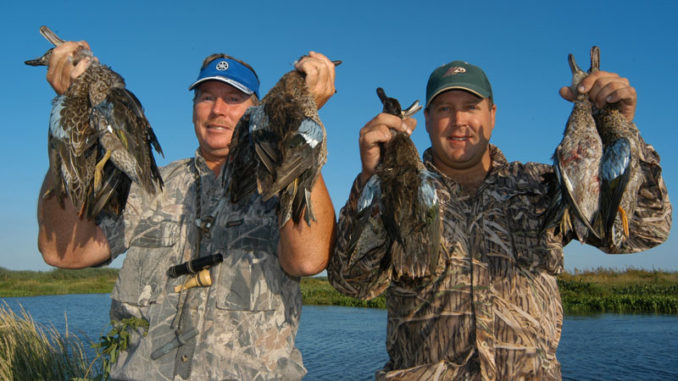
If the numbers of blue-winged teal in Louisiana in early September are a barometer, there could be many ducks in Louisiana, weather conditions permitting, in the regular 2021-22 duck season.
Before the special teal season opened on Sept. 11, waterfowl biologist Larry Reynolds of the Louisiana Department of Wildlife and Fisheries conducted an aerial waterfowl survey. Blue-winged teal numbers were impressive, he said.
Reynolds estimated that 281,000 blue-winged teal were in Louisiana, a total that was 19% higher than September 2020’s estimate of 236,000, and 66% higher than the most-recent five-year average and 24% higher than the long-term average.
Reynolds said it was the third-consecutive year the numbers increased after hitting rock bottom at 59,000 in 2018. Most of this year’s increase was evident in southeast and southwest Louisiana. The largest concentrations of blue-wings in the freshwater marsh was north of White Lake and in flooded rice fields west of Rayne and south of Jennings. Smaller, more numerous groups of teal were scattered across mostly fresh and intermediate marsh.
“The 209,000 blue-wings estimated from southwest Louisiana transects is 44% higher than the most recent 10-year average of 145,000 in this region,” Reynolds said, “but contrary to last year and most other previous September surveys, most were seen in marsh habitats instead of agricultural fields in this region.
The effects of Hurricane Ida
Reynolds also saw the mess left by Hurricane Ida when he flew transects in southeast Louisiana. He counted an estimated 66,000 blue-winged teal in the region, which is five times greater than the most-recent 10-year average. Also, he said, blue-winged teal were counted on seven of the 10 transects, compared to only three in 2020.
“Oddly, there were no concentrations of birds in this survey region, and blue-wings were noted in unusual locations like flooding between sugar cane rows east of Larose, and near a flooded oil refinery in Alliance,” Reynolds said. “Indeed, the habitat across southeast Louisiana was severely impacted by the hurricane, from western Terrebonne Parish east to the Mississippi River. Marsh was broken up and vegetation was scoured away, flooded and presumably affected by saltwater. We saw very little submerged aquatic vegetation across wide expanses of marsh, including where we have consistently seen dense stands in prior years.”


